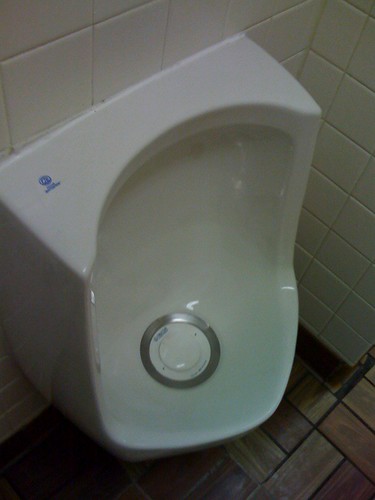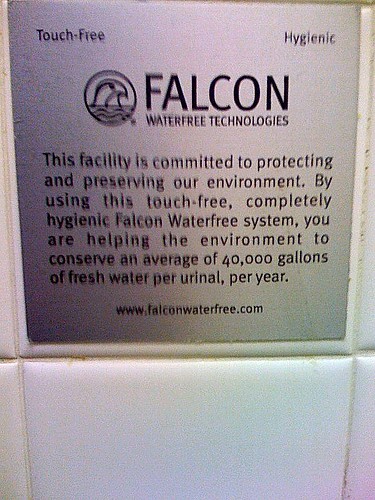Concept Art is distinct from the design concepts I talk about here, but they do converge at the point of expressing a powerful image of the artifact. The Concept Design book, by Scott Robertson with a forward by Francis Ford Coppola, collects the work of seven concept artists, but the book has been sold out. I’m happy to discover they’ve posted this online version as a reference…
-
OMA’s Proposal for the Seattle Public Library
Now here’s a little nugget of gold for concept hunters like myself: The Office for Metropolitan Architecture’s original 1999 proposal for the Seattle Public Library. I love flipping through it and reading the story of how they let their idea unfold.
-
Images That Sum Up Our Desires
We are, by turn — and a writer says it with sadness — essentially a society of images: a viral YouTube video, an advertising image, proliferates and sums up our desires; anyone who can’t play the image game has a hard time playing any game at all.
— Adam Gopnik, Angels and Ages: A Short Book About Darwin, Lincoln, and Modern Life, p 33
-
Reverse-Engineered Concept: Waterfree Toilets
Here’s a reality we deal with all the time: toilets that use a great deal of clean, potable water in order to flush. This urinal for instance, requires one gallon, or 3.8 litres, just to flush some pee, which seems excessive:
The sustainability problem here has multiple facets: the availability of water, the financial cost of water for the building owner, and the energy needed to treat and transport water, just to name three. The latter challenge alone makes up a large percentage of every city’s energy expenditure.
Let’s say we were a toilet manufacture responsible for a great deal of this water use. How might we develop concepts to address this problem? Here’s how I would use two tools from the concept design toolbox:
The problem we’re trying to address here is very clear (as opposed to, say, create a toilet that people are more likely to buy). So we can play with idealized design to set our bar very high for solving this particular problem. A ideal design statement is:
A urinal which uses no potable water at all.
Then the team could play question the brief on this statement to generate variations. Here’s a few:
- A urinal which uses greywater.
- A urinal which flushes with something other than water
- A urinal which does not use water
- A receptacle that accepts urine that is not a urinal
…and so on. Then the team could take each of these statements and workshop them, sketching and sharing and playing with ideas. Each different set of constraints helps us think differently and generate different ideas, for example the first could have us thinking of all sorts of ways of capturing and routing greywater.
We could probably generate several plausible concepts using this combination of idealized design and question the brief. One of those might be the Falcon Waterfree urinal.
And a little PR doesn’t hurt…
-
Play Literacy
…yes, that term sounds a little dumb, but it’s an idea I think will be important in the future. A deliberate spin on computer literacy, I think play will not only be important to designers to support creativity and innovation, it will be important simply to get along in an electronic world.
In the past I’ve argued that software tools will continue to be created much faster than we can possibly design quality interfaces for them. So consumers who can and are willing to play with a device to figure it out may be more successful.
I had this thought today while driving and navigating with the Google Maps iPhone app (I know, I know). The iPhone is slick, and the app is slick, but for so few functions it ain’t easy to use. But the slickness, the playfulness, of it all helps me overcome this. The desirability of the device and the experience make me want to overcome the usability. As designers, we can build playfulness in to help people, and, cynically, playfulness might be a sexier product development approach to sell than usability.
Make ToolsView more presentations from Victor Lombardi.Update: Only tangentially related is how receive serious political ideas from comedians…
In one “astounding half-hour” of television, Stewart viewers saw “more trenchant talk of the financial crisis and the responsibility of the networks than you’d find on any news channel, all the more surprising in that it aired on Comedy Central.”
Not surprising, really, in that comedians like Lenny Bruce did this long ago. It’s just another place where we like to coat our serious work with a bit a humor and fun to make it palatable.
-
Communicating Concepts
When I see concepts that are received well, the concept itself can usually only take a portion of the credit. Just as important is how the concept is communicated. Some of this is common knowledge: make it look good, choose the right level of fidelity, show it in context. Others are maybe not so obvious…
-
Show what’s new, then stop. As opposed to stories which can take their time to create worlds full of intricate characters and details, effective concept narratives should only last as long as they can sustain interest, inspire, and present the new. When I’m done showing what’s new, I’m done with the presentation.
The temptation here is to show everything the team worked on, because the work was hard and full of careful detail. But like a beautiful movie set, the rest is there to support the concept, not become part of the story.
The Charmr concept is a good example, focusing on day-to-day diabetes management only.
-
State the time frame.
Setting expectations of the purpose and feasibility of a concept is often accomplished easily by stating the time frame for a concept; we perceive a concept for next year’s product very differently than a concept for 10 years in the future.I find it useful to think in terms of the three concept types described in the book Product Concept Design: A Review of the Conceptual Design of Products in Industry:
- Product Development Concepts support the definition of the product specification, which is needed to set detailed goals of the design of the subsystems of the product and for the following phases of the design process. An example is the concept for the second generation One Laptop Per Child XO-2.
- Emerging Concepts are created in association with technical research or the modification of products for radically different markets. They unravel the opportunities of a new technology or market and growing user needs, and facilitate the company’s learning and decision-making process. An example is IconNicholson’s Social Retailing.
- Vision Concepts support the company’s strategic decision-making by outlining the future beyond the range of product development and research activities. There is no expectation that this kind of vision concept will be implemented, and therefore the technical and commercial requirements are less restrictive than in other kinds of concepts. An example is frog design’s Aura.
-
Distribute a holistic presentation.
Whether it’s a model, a document, or Web 2.0-style syndication, the elements of our concept should stay together in one media piece so that anyone who experiences it will understand it.While not a concept, the way Apple presents the iPhone exemplifies careful, holistic packaging. Starting with Steve Job’s keynote presentation and extending to the video guided tour the tone is exciting, educational, and includes all the relevant information in one media clip (I would embed them here, but notice that Apple doesn’t let me do that).
Unfortunately forums like the Techcrunch blog can be brutal on concepts when the presentation doesn’t do justice to the concept. I think different presentation can change that.
-
-
IDEO’s Open Dev of the BugBase Hardware/Software UI
It’s not often we get to peek inside anyone’s concept design process, so this blog from IDEO has me starting up my reverse-engineering machine….
An open project between BugLabs and IDEO, this deep-dive exploration of the BUGbase UI is focused on re-envisioning the BUGbase interface with an eye toward integrating new display and input technologies.
The outcome of these explorations will feel less like a finished product and more like a concept car. And like any successful concept car, we hope these provocations will not only help us gauge users’ interests, but will spur constructive discourse and inform future design, engineering, and business decisions.
BugLabs’ commitment to openness presents a unique and exciting opportunity for us to be as inclusive about the design process as possible. For this quick two week collaboration, we will be conceptualizing new interface paradigms, designing new tangible user interface directions, and creating the associated industrial design/housing-modification solutions.
-
Concepts as Inspiration
Concepts strive to sway opinion by eliciting emotions. Fundamental to this purpose is the new, the aspect that is beyond question different than what has been done in the past. The new is what causes the audience to pause and react.
This reaction can be polarizing (yes/no, this/that) in order to make progress toward a detailed design. This reaction can be stimulating, sparking new ideas to increase the number of possibilities. Effective concepts are carefully constructed to appeal to particular emotions.
Boredom is the enemy of design concepts.
-
Webinar with Bill Scott of Netflix, Yahoo + 20% Off
Bill Scott of Netflix, formerly of Yahoo, will be hosting the Future Practice webinar tomorrow, helping web designers learn how to create designs that are easier to implement by illustrating the UI engineer’s point of view. And you, my dear readers, get 20% if you enter the code VTWBNR when signing up.
I recorded a bit of our rehearsal with Bill. He’s killer smart — an O’Reilly author and frequent presenter — but has a great laid back style that’s such a pleasure to learn from. Here’s a ~7 minute edit:
-
A Quantified Value of the iPod Design
This study — Who Captures Value in a Global Innovation System? The case of Apple’s iPod — is one of the best I’ve heard of in a long time. The researchers traced the parts and assembly of the iPod and attributed the value generated by each step by part and by country. A few key stats: of a $299 video iPod, Apple gets the largest piece of the pie: $80. The other portions are relatively small; China only gets $4 for assembly.
Hal Varian of the New York Times made this key observation about how Apple’s capabilities generate their benefits:
The real value of the iPod doesn’t lie in its parts or even in putting those parts together. The bulk of the iPod’s value is in the conception and design of the iPod. That is why Apple gets $80 for each of these video iPods it sells, which is by far the largest piece of value added in the entire supply chain.
Those clever folks at Apple figured out how to combine 451 mostly generic parts into a valuable product. They may not make the iPod, but they created it. In the end, that’s what really matters.
I’m encouraged by studies that highlight the value of concept design given my work in this area. Here’s a question for you: how would you most like to learn more about concept design: a book? videos? something else?
-
When Engineering Defines the Limits of Design
I’ll get the plug part of this post out of the way right here: I worked on a preview of Bill Scott’s upcoming webinar on What Every Designer Should Know about Interface Engineering and I think it’s both very good and very important, and what’s more it’s a topic that I’ve never seen addressed outside project work.
I was reminded of this in a meeting the other day. We’re working through a Flex application that asynchronously queries the server with each criteria specified on a form, a little like what Kayak does, but with more data coming back from the server. Unfortunately the latency in that data transfer is simply too high, with too much customer time spent watching the spinning cursor. It’s unfortunate, because the design of the form itself (not mine) is clever, and I found myself thinking, “This is how Google would do it.” But the infrastructure in question is not as robust as Google’s infrastructure, and so the design needs to be modified to fit the latency of the system.
And this is the kind of situation that Bill refers to. When designers understand the limits and degree of difficulty in the technology needed to implement their designs, the designs are better.
-
Hire People Who Talk to Plants
Empathy has long been a useful trait in designers, because we’re more likely to design products and services that offer utility, usability, and desirability if we care about customers. By extension, it’s therefore a useful trait for business people as well, as authors like Dan Pink point out.
When hiring, the tricky part is figuring out who feels empathy. Maybe, while talking to someone, you could spill hot coffee on yourself and see how they respond? Maybe you could ask them to talk through an approach to a business problem and see if they overlook the customer (I’ve seen user experience designers do this. It ain’t pretty.)?
If you’re lucky enough to find someone who talks to their plants, hire them. We know speech doesn’t actually help plants grow, but anyone who cares enough to treat their plants as if they were people will probably treat customers very well.
-
Dream Cars Meet Harsh Reality
 That’s what Phil Patton at the New York Times thought about the concept cars at the Detroit Auto Show. In the article I found some insight as well as some assumptions we can toss out…
That’s what Phil Patton at the New York Times thought about the concept cars at the Detroit Auto Show. In the article I found some insight as well as some assumptions we can toss out…But this year, dark economic clouds seem to have cast a shadow even over the designers displaying their ideas at the Detroit auto show.
No question, the mood of the economy cannot be ignored in strategic design exercises. But then they go on to say…
Concept cars are expensive to build and budgets are tight.
Wrong. The way they are traditionally created are expensive design exercises: built to be actual working cars. But instead of an executive command to “only show sober, product development concepts” the executive command could have been “show cars that illustrate our strategic direction, continue to wow the audience, and spend 1/4 of what you usually spend.” Then the design staff has a meaty challenge. If the shape is the concept, they don’t need mechanical bits or even interiors, just dark windows. If the drive train is the concept, rip off the body. Concept cars are cool, but the practice of showing concept cars is now decades old and could use a little shaking up.
said Bryan Nesbitt, General Motors’ vice president for North American design. “You can no longer just throw a wild concept out there. You have to have a story.â€
A concept that lacks a context is simply confusing. For instance, in 2004 Chrysler showed the ME Four-Twelve, a midengine supercar with a V-12 engine. Though it excited horsepower-hungry showgoers, it had no place in the company’s business plan and didn’t mesh with the image that the Chrysler brand was trying to project.
There’s an excellent insight, a concept that did not follow the constraint of strategic relevance or brand perception.
Mazda has drawn attention in recent years for some of the most provocative concept cars, but it did not display any concepts at all this year. Laurens van den Acker, general manager of Mazda’s design division, said that was because the company was now busy applying to production cars the themes it had developed in design studies.
That’s like saying, “We don’t have time to be strategic, our tactics are so good.” I bet that’s just rhetoric, and not showing concepts is just a money-saving action.
The article goes on to look at how the 1933 Auto Show helped companies discover how valuable concept cars could be, a good read.
-
Obama’s Design Thinking
(Editor’s Note: a meme like “design thinking” hasn’t really been beaten to death until it’s been associated with and used to explain popular culture :-)
There were two lines in President Obama’s inaugural speech that caught my attention, signaling him as someone who can think beyond the prevailing frames and design new situations. In both cases he rejects the binary framing that so often colors U.S. politics (think Democrat/Republican, Liberal/Conservative…) They are:
As for our common defense, we reject as false the choice between our safety and our ideals.
Right, we can have both. They are simply design constraints, and if you decide to obey both constraints you are forced to generate new options.
The question we ask today is not whether our government is too big or too small, but whether it works, whether it helps families find jobs at a decent wage, care they can afford, a retirement that is dignified.
Obama will probably cut hard in some places that are wasteful, pleasing fiscal conservatives, and spend heavily in others to stimulate the economy, pleasing social progressives. Here he makes it clear he does not fall neatly into either camp, looking instead to rational measures of progress.








